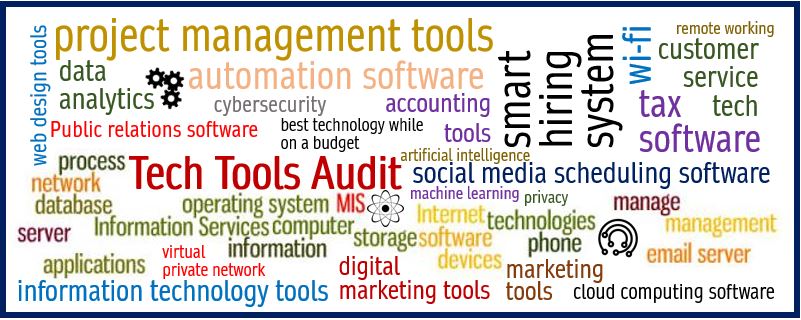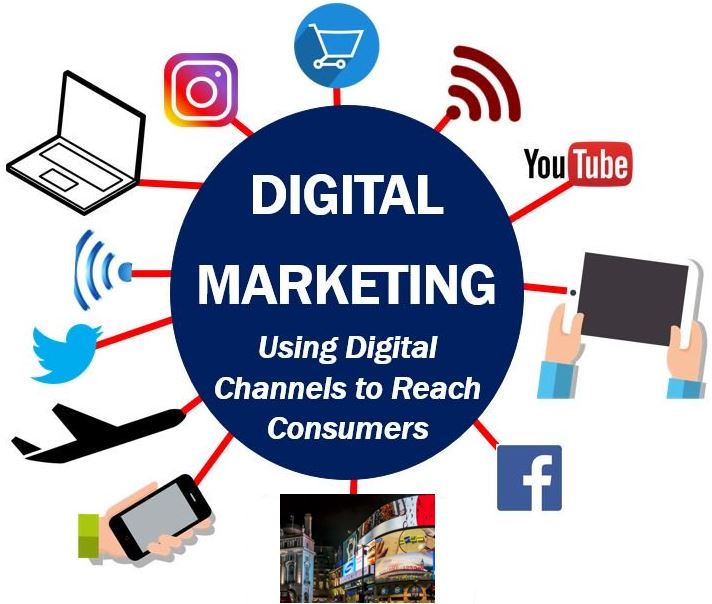While small businesses are never short on ideas, the same can’t be said when it comes to funding and manpower. Luckily for these business owners, there are thousands of technology tools and programs out there to help.
Now comes the tough part: In such a saturated market, how are business leaders supposed to choose the right tech tools? And now for the second hurdle: How are they supposed to stay within their budgets?
If you’re looking to cover your business’s technology needs without breaking the bank, here are a few helpful tips to consider:
1. Regularly Audit Your Tools

The first step to ensuring you get the best technology for your budget is to conduct regular audits of your current tool set. Take a good, hard look: Are you using the best sales tool for your team? Has your social media scheduling software gone up in price? Is your premium plan of slack still worth it?
Remember, the most expensive tool is the one that isn’t used. When in doubt, ask members of each team what software they actually need. Double down on those tools. If you find out that nobody has used a program in the past six months, though, then it probably isn’t worth paying for.
2. Take Advantage of Free Trials

Don’t feel guilty: Companies offer free software trials because they know businesses need to use a tool before they decide whether it’s worth paying for. Tell team members whenever you sign up for a trial, and ask them to give you feedback on its value before the free period is over.
What if your team isn’t in love with it? Then don’t move forward with the paid version. Ask the people who actually use it to suggest a better option. Be prepared to pay a bit more for software with more features or a stronger user experience.
3. Ask Whether the Free Version Will Do the Job
Just as many software providers offer free trials, some offer a free-forever version. The free versions of these programs rarely have the features and flare that the premium edition has — but who says you need every bell and whistle? Depending on your needs, the freebie may work just fine.
For example, Dropbox’s basic plan provides 2GB of cloud storage for free. That might not sound like much — but if your business mostly deals with text documents, it may be plenty. Plus, if you store documents locally, moving documents to the cloud could cut down on hardware and energy costs.
4. DIY What You Can
Not every business problem requires you to purchase new software. If you run a small business that makes just two dozen sales per month, do you really need a state-of-the-art accounting program? You might be able to do it manually in an Excel spreadsheet.
With that said, remember that employee time costs money. Do your research: Is the amount of time required to make an ad hoc system work worth it? Complete a full cost analysis before committing. If the DIY route takes even a few extra hours per week, it might be worth it to pay the premium.
5. Prioritize Tech Tied to Income Streams
It’s cliché, there’s no better way to explain this concept than “you’ve got to spend money to make money.” Tech tools that can expand your revenue pipeline should be your first port of call.
Think, too, about customer relationship management systems. Building better relationships with customers increases brand loyalty, and it only takes a small boost in retention to cover the monthly cost of a CRM system.
6. Explore Open-Source Options

Open-source software is typically similar in functionality to closed-source versions but a lot less expensive. A good example is OpenOffice: It has all the goodies of the Microsoft Office suite — spreadsheets, databases, word processing, and more — and is free forever.
Plus, open-source software is flexible. Because any developer can contribute to it, plugins exist for all sorts of use cases.
7. Choose Channels Wisely
Small business marketing doesn’t have to be expensive. Between email marketing, organic SEO, and paid social media, you can get the word out there for little more than your labor costs. Some clever, comedic copy can go a long way toward engaging your audience.

If digital marketing gets overwhelming, try a tool like Mailchimp. It has a free version, but if you need more users or email addresses, it won’t break the bank, at $10 per month. Contrast that with old-school marketing methods. Billboards, radio ads, print ads can cost thousands of dollars per month.
8. Think Broadly About Value
Technology can do more for your business than simply open up new sales channels. When deciding what tools to invest in, think broadly about the value they can provide.
Beyond increasing your revenue, the right technology can:
- Make your employees more efficient, enabling them to get more done in less time.
- Increase the quality of your work, allowing you to charge more for your services.
- Reduce team turnover, which can reduce your hiring and onboarding costs.
- Help you answer customers’ questions more quickly, improving your customer experience.
- Identify new product or service opportunities, opening up new lines of business.
- Simplify outsourcing, helping you keep your labor costs low.
- Make remote work possible, reducing your office space and utility costs.
No matter the size of your business — or the size of your budget — technology can make a night-and-day difference to your bottom line. Do your research, trust your team, and make smart investments. The tools you need are out there, and in most cases, they cost less than flashy, enterprise editions might make you think.
Interesting related article: “What is Technology?”

